The Logistics
Planning any trip is an iterative process. So two trip planning enthusiasts/logistics sickos planning a multi-modal trip to a remote region during a disastrous time period for the Scottish ferry system was bound to be a carnival of sorts. Our tentpoles were the book signing at Dunaverty, the associated stop at Machrihanish, some adventure out west, and then ending up on Arran, which isn’t the easiest place to get back to.
Ferry service interruptions and drastically limited frequency to Askernish/Barra/Harris put a crimp into things. Our best-laid plans to get to Askernish were dashed, unless we wanted to scratch Oban and spend a couple days getting there and back. We looked at flying, even going so far as to look at going from Campbeltown to Glasgow and then out to South Uist. That simply wasn’t logical. Will get there one day!

This was the first draft of the intinerary.

The finalized itinerary.
In the midst of all of this desire to get to the farthest reaches of the Hebrides, we were able to dig deeper on Kintyre and the west coast, afforded the time to spend a leisurely morning at Carradale, pop into Isle of Seil (and cross the “Bridge Over the Atlantic!”, set up a base in Oban for a couple nights, and get into a pickle on Mull. I do wish we’d carved out time for Gigha, but it would’ve meant a rushed middle of the trip. Tradeoffs!
Jim’s sense of curiosity can’t be overstated. Everywhere we went, native Scots approached Jim to tell him they’d never even considered stepping foot at many of the courses that he chronicled in the book, much less even heard of some of them. Also, as Jim mentioned on the podcast (link here), our sense of scale and distance is so warped as Americans. This often gets lost when people explore the possibility of Scottish trips. We’d be wise to be more like the Scots and dig deeper instead of casting such a wide net - there’s another two or three levels underneath what everyone typically does, and the context generates a deeper appreciation for why the great courses are great.
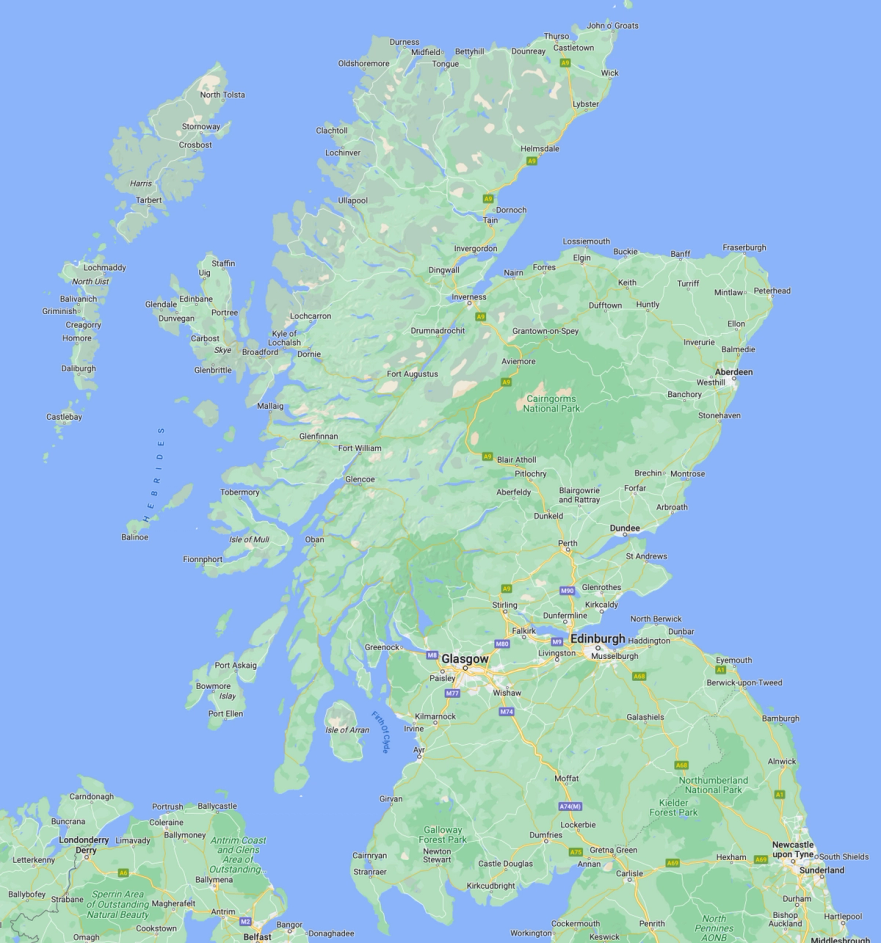
Jim and I tend to put trips together similarly: identify a few mainstays, a few whimsical places, and then draw a line around those and figure out how crazy and far afield we can get, and then dial it back from there. It helps to have some constraints (like hotel availability or additional people in the traveling party who aren’t insane) to reign us in, otherwise I think we would end up out in the Orkneys and I’d be calling my wife that the trip is gonna go another three days and I’ll be home late. Leaning into the surprises and using them as an opportunity is the key. And building in that space to explore and not be scheduled out is wonderful, as it lets you glean intel and expertise from people along the way. Another plus of these less-visited locales and courses is that you can be flexible and rock up without a tee time. That’s certainly not the case everywhere (particularly Shiskine, Machrihanish in our case), but for every Carradale or Seil that we visited, there are 10 others waiting in the wings, both in these areas and in other places.
The Drive
Jet lag, luggage, squeezing in some fun. The first day is always a bit of a circus. The drive from GLA out past Loch Lomond and then down the Kintyre Peninsula is a treat. Just as with East Lothian and Fife, a flight into Glasgow provides dozens of options for same-day golf (even a 36-hole day is in the cards). Conversely, I recall vacations Neil and I were fortunate enough to take as kids when we’d go out west to go skiing and you’d travel all day and then have to go rent skis or snowboard and then wait until the next day to hit the slopes. The anticipation was real and exhilarating, especially for such a sensory, physical experience. The drive from Glasgow provided whiffs of that: the procedural steps of passing through immigration, collecting the rental car (which both EDI and GLA are set up pretty poorly for, but also have delightful counter agents) and then setting off over the big bridge, past Loch Lomond and counterintuitively northward, until finally turning south hard against Loch Fyne (more on the oyster bar later) and down the A83 through (insert town names Inveraray, Lochgair, Lochgilpead, Ardrishaig and then Tarbert, and Paul McCartney’s farm and then crest the hill north of Machrihanish and peering down the coast in awe with the setting sun filling up the driver side of the car.

The distance is 57 miles and a continent (galaxy?) away. Sure, you could fly into the Campbeltown Airport that buts up against the ninth green at Machrihanish and marvel at one of the longest runways on earth (shoutout space shuttles and B2 and SEALS) and for shorter trips, why not, but if you really want the full monty, then drive. And we haven’t even gotten to Arran yet, which sits halfway back to reality but somehow even farther away. It’s like if someone took the geography of the Big Island of Hawaii, mixed it with the feeling and culture of the Scottish Highlands and dropped it 30 miles from the biggest city in the country. In the words of Jim: it’s not an accurate depiction of reality.
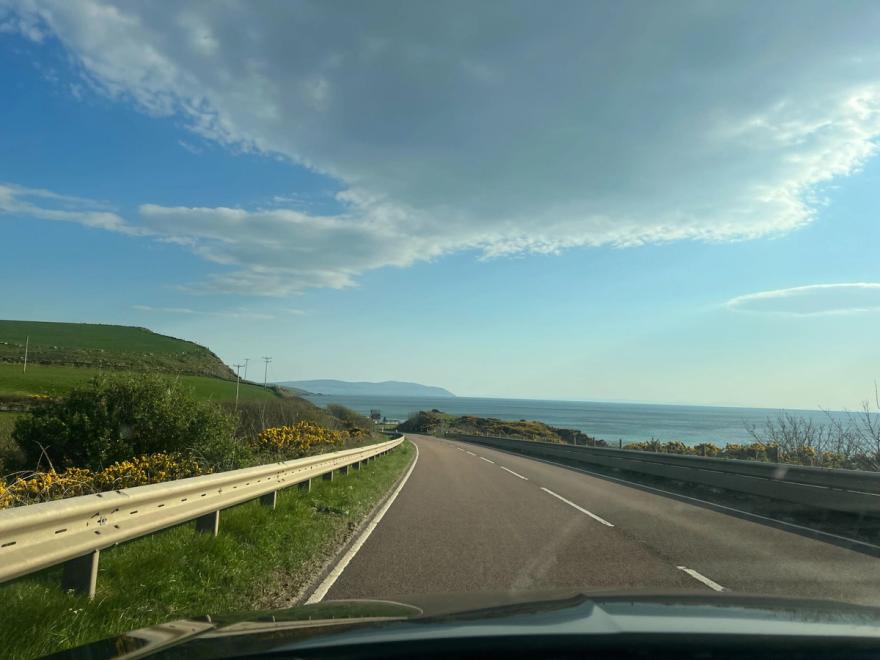
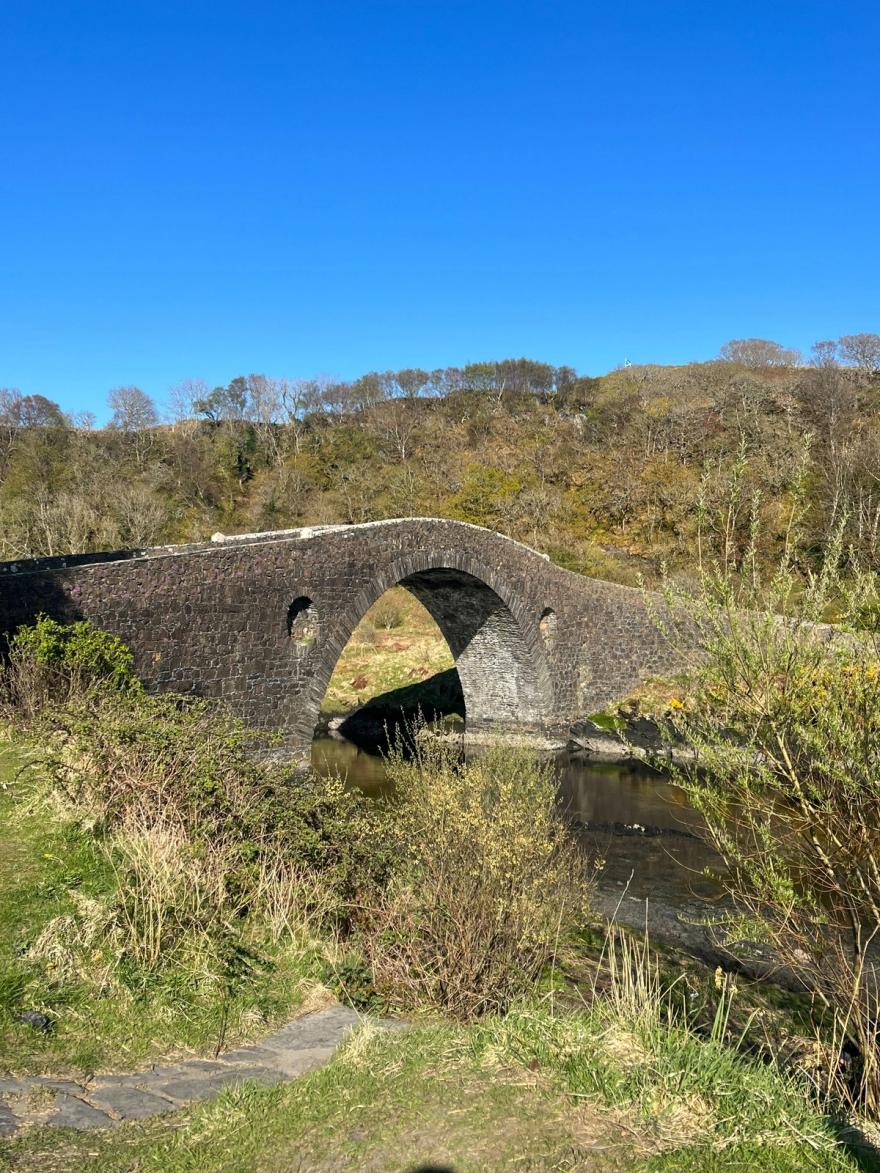
Campbeltown
The triangle formed by the tiny village of Machrihanish on the west side of the peninsula, Campbeltown straight east occupying an impressive harbor, and Southend about twenty minutes south. Each borough has its own distinctive atmosphere: Machrihanish feels like an outpost at the edge of the earth, Campbeltown a glimpse at the past of thirty-something distilleries and a regional dairy and shipping center, shrinking away and reduced to three distilleries (Glenscotia, Glengyle, and Springbank - count me on team Glenscotia); and Dunaverty, smaller than you expect, looking out toward Sanda Island, and it’s tea house and wee golf course and then Dunaverty Rock, the abandoned Keil Hotel (owned by our guy Donnie!), Keil Cave, St Colomba’s footprint and the shores of Northern Ireland looming across the strait, the Harbor Bar and Portrush over there.
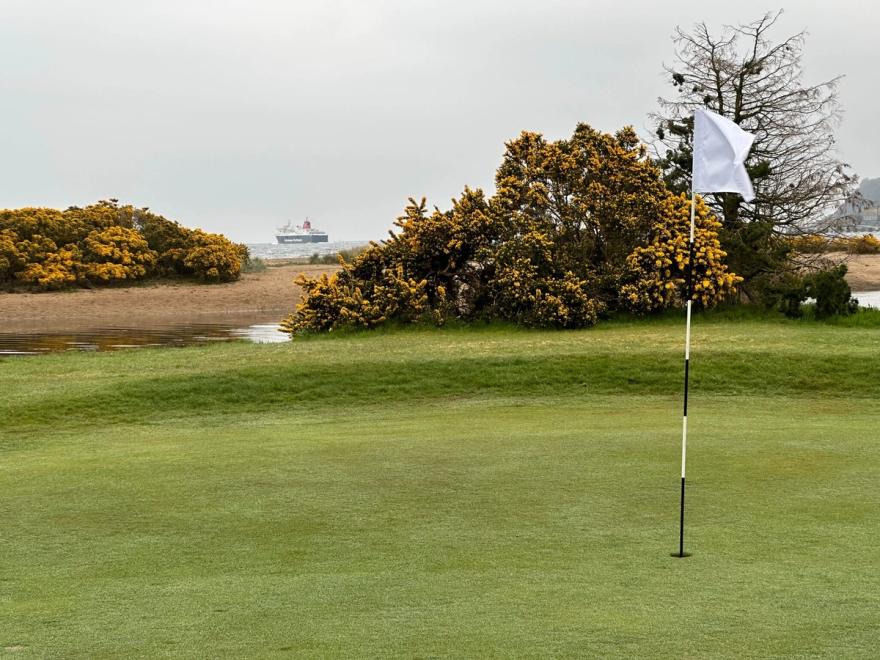
Local Flavor
Since my first visit to Scotland in 2017, I’ve been inherently confused by the widespread derision of the country as a culinary backwater. Whether it’s at a highly regarded restaurant in Edinburgh, a two-person kitchen in a tiny clubhouse on Arran or Moray, or at a tea room in Dunaverty, I’ve been blown away by the ingredients and preparations. From the toasties and soup at a pub or small clubhouse, or oysters, langoustines, local beef, and fantastic veggies, it feels like Scotland is starting to stick up for itself to the wider world, showcasing the great ingredients and deep traditions, and showing that there’s more than pub food and Full Scottish Breakfasts (both of which are delightful!)
Also: Scotch Whiskey. With each progressive trip and new locale, I try to dig deeper on a different interpretation of Scotch. For years I tended toward American or even Irish Whiskeys, turned off by the peatiness in some of the mainstays on the Scotch Whiskey scene. Since then, I’ve realized there’s a lot more than just that flavor profile, even on Islay, which I’d always referenced as the peatiest of them all.
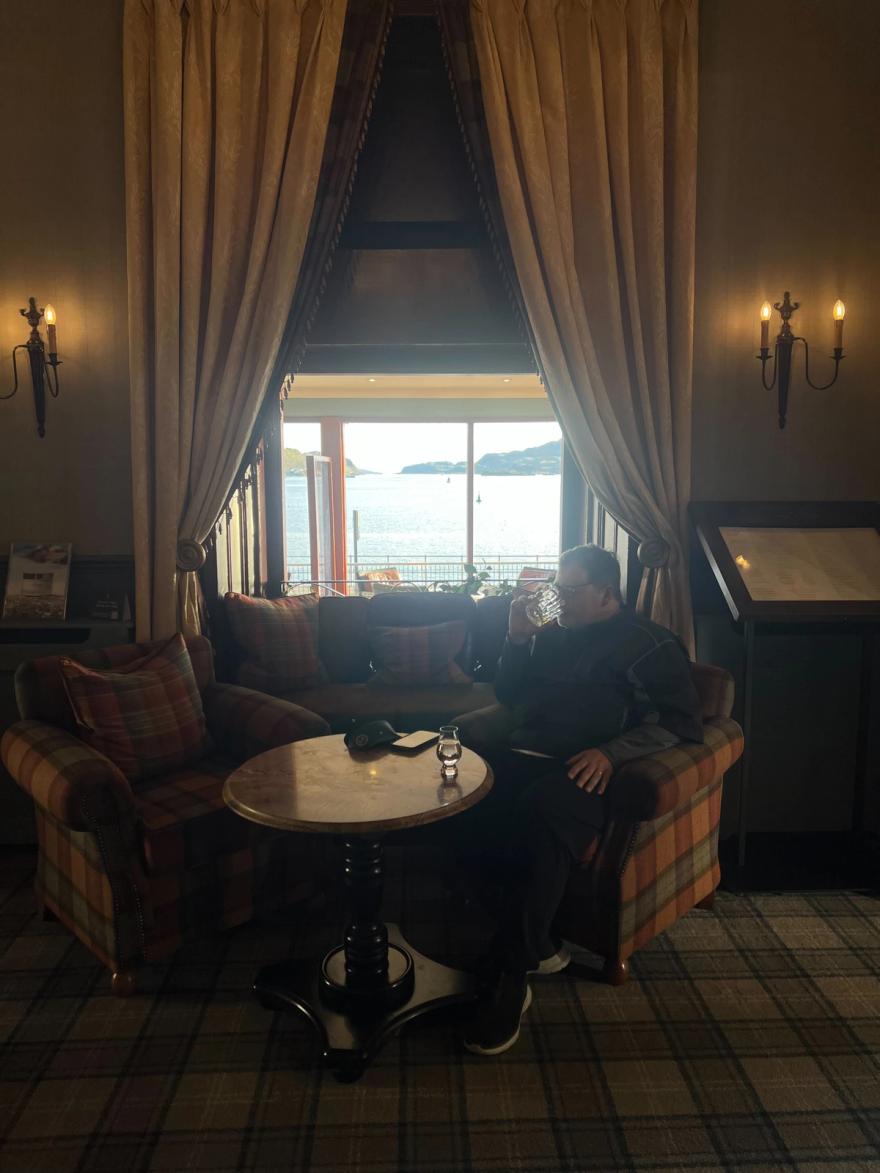
Jim drinking whiskey in our hotel with a great view.
Oban is a delight. Just go. Have never been to Queenstown, New Zealand, but this is what I picture it to be: a gateway to adventure and discovery, and with a bunch of world-class offerings to keep you sated when you return to the de facto home base. A highlight of the trip was the restaurant EE-USK, located on the waterfront in Oban. It’s an institution and rarely is a view like the one on offer matched by the quality of ingredients and skillful preparation (and by the Scotch list.) We did not get a chance to visit the Oban Seafood Hut (colloquially know as The Green Shack), but Jim swears by it. Really the whole strand in Oban is full of delightful bars and restaurants that go the extra mile in leveraging the world-class ingredients showing up on the docks a few yards away each evening. This increasing pride is being noticed by others, too.


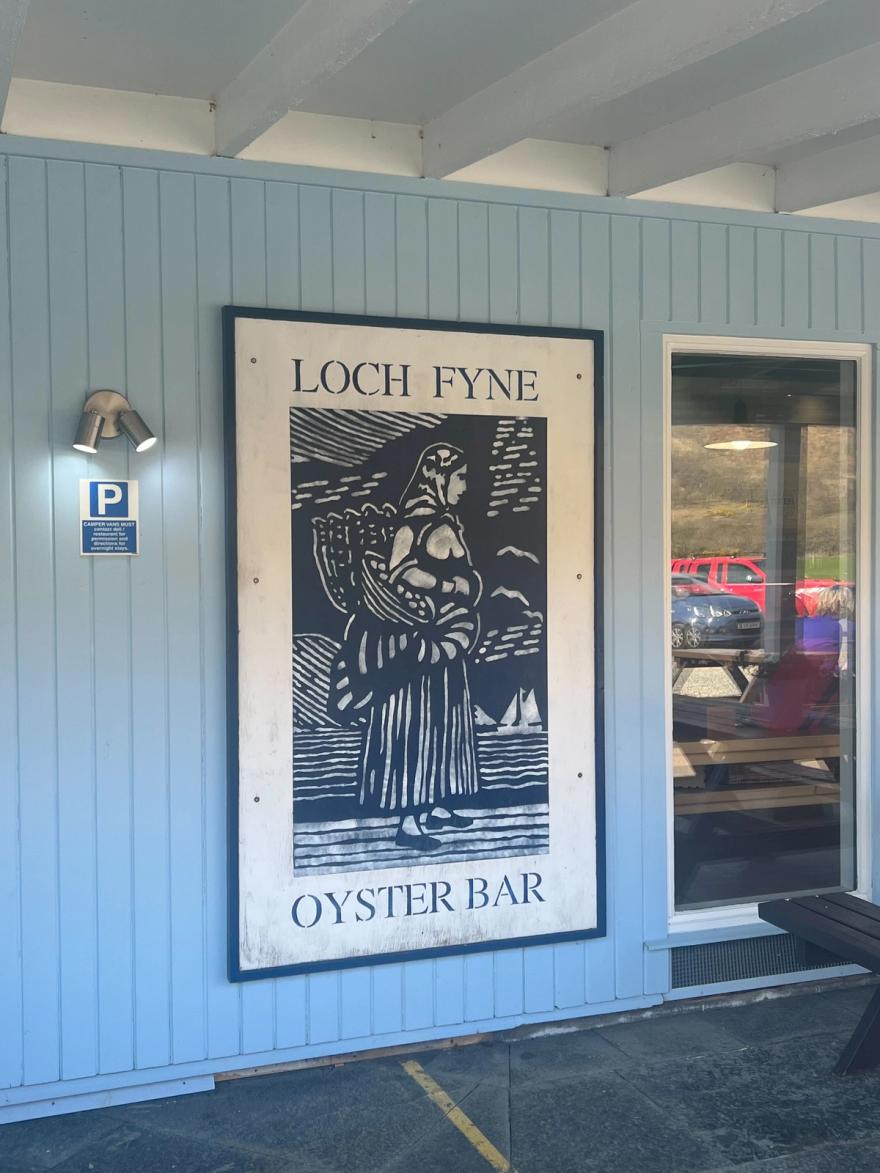


Other culinary standouts from the trip included Loch Fyne Oyster Bar on the initial drive down from Glasgow, the Corrie Hotel’s restaurant and bar (exactly what a small hotel restaurant should aspire to be), the haggis nachos at both the Black Sheep Pub and the Machrihanish Clubhouse (both supported by the same restaurant group), and the ice creams on offer from Greg’s Arran Ice Cream, particularly the “Scottish Tablet” flavor, which defies categorization. And a cut above all of these (and pretty much every other establishment I’ve ever visited) is Frances Hill’s Muneroy Tea Room in Southend. I’m more into sweets than anything decadent or rich, which typically leads me away from baked goods after a few bites. At Muneroy’s the cakes are virtually levitating off the plate they’re so light and fluffy. The balance of ingredients and sugar is spot-on, affording a certain levity that I’ve never tasted in a cake before.
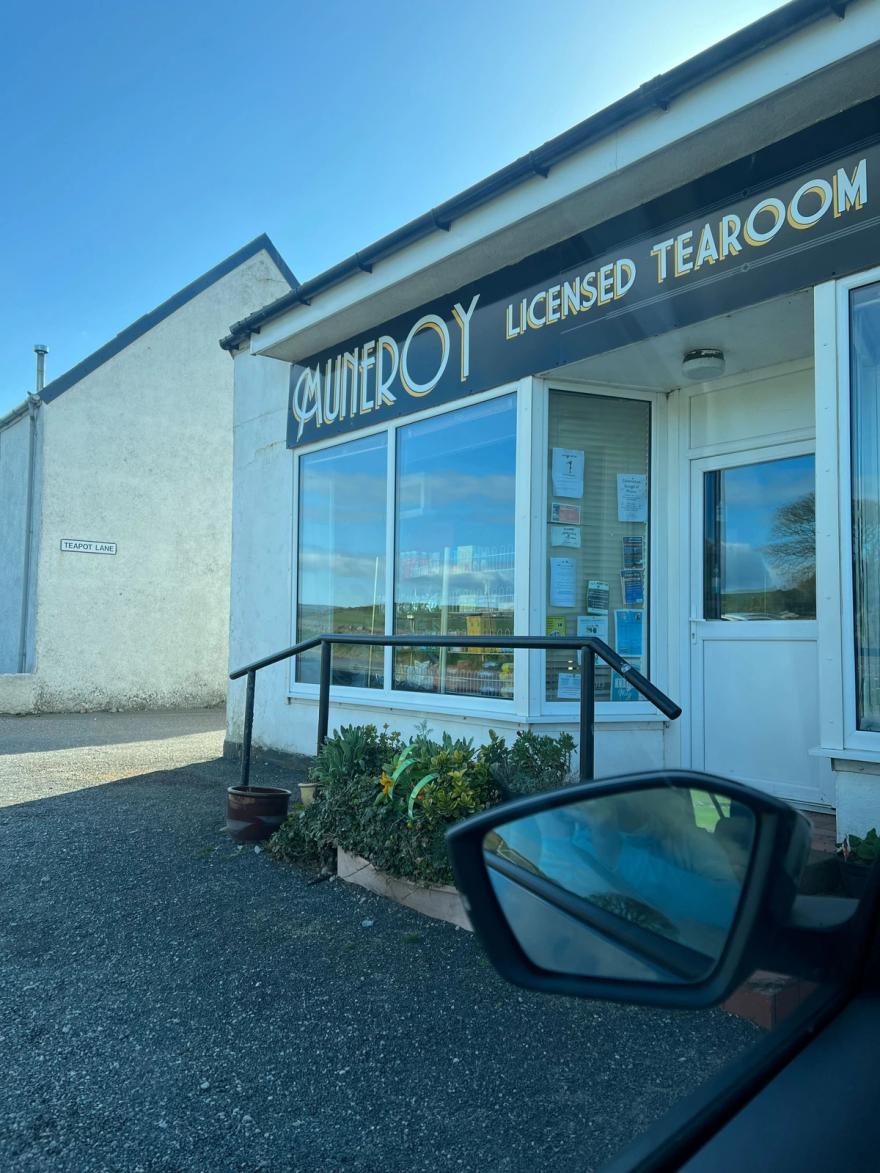

Also, the coffee culture in Scotland (and in the UK at large) still mostly stinks.